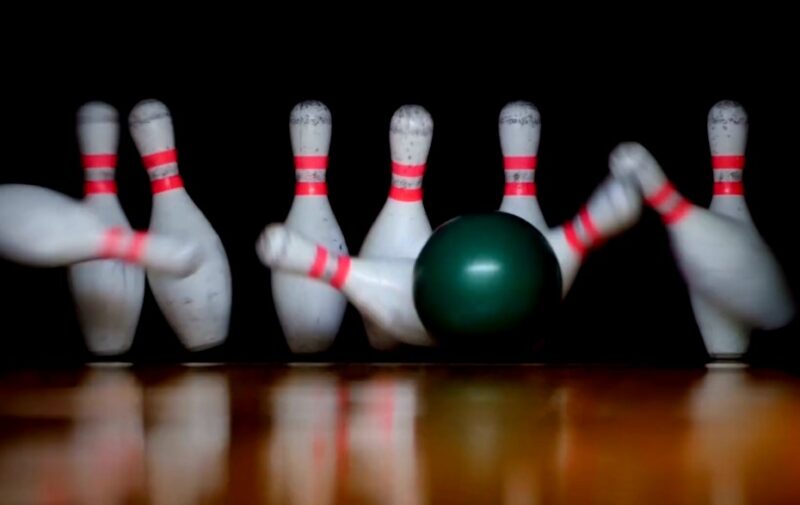Bowling is more than just throwing a ball down a lane and hoping to knock down some pins. It’s a game steeped in tradition, technique, and, yes, its own unique language. Whether you’re a seasoned pro or a newbie looking to get a strike, understanding the terminology of bowling can give you an edge—or, at the very least, make you look really cool in front of your friends. In this guide, we will talk about the world of bowling terms, from the basic to the obscure, the official to the slang.
The Basics: Must-Know Terms
Whether you’re new to the bowling alley or a regular weekend warrior, you’ll encounter a handful of terms that form the building blocks of bowling lingo. These are the must-know words that are crucial for understanding the game and engaging with fellow bowlers. Let’s get the ball rolling!
Strike

The golden word of bowling: Strike! A strike occurs when a bowler knocks down all ten pins with their first ball in a frame. Achieving a strike is a significant accomplishment and adds a strategic layer to the game, as it affects the scoring for subsequent frames.
Why it Matters
Strikes are the holy grail of bowling. Not only do they give you a sense of accomplishment, but they also rack up points quickly. When you score a strike, your points for the next two balls are added to the strike frame, multiplying your potential score. That’s why experienced bowlers aim for a series of strikes, commonly known as a “turkey” or even a “perfect game” when you get 12 consecutive strikes.
Spare
Just missed a strike? A spare is your chance for redemption. A spare occurs when you knock down all remaining pins with your second ball in a frame. Like a strike, a spare also adds extra points to your score.
Why it Matters
Scoring a spare can boost your total game points significantly. In the frame, you get a spare, and the next ball’s points are added to the spare frame. It’s not as rewarding as a strike, but it keeps you in the game and piles on the pressure for your opponents.
Open Frame

An open frame is essentially a miss. It happens when you fail to knock down all ten pins within the two tries of a single frame. This term is often accompanied by a sense of missed opportunity and, well, some level of disappointment.
Why it Matters
Open frames can be a game-changer, and not in a good way. They don’t offer any bonus points and can quickly drag down your total score. However, they serve as learning moments and give you the motivation to improve your technique.
Bowling Lingo: Slang and Jargon
Beyond the fundamentals lie the colorful and quirky phrases that add a touch of fun and complexity to the game. These are the terms you’ll hear from avid bowlers, complete with inside jokes, lore, and some good old-fashioned trash talk.
Turkey
No, we’re not talking about the bird or the country. In bowling, a “turkey” refers to three consecutive strikes. The term supposedly comes from the old tradition where bowling alleys would give away a turkey to anyone who bowled three strikes in a row.
Why You Should Know It
Knowing what a turkey is can not only make you seem like a pro but also help you aim for it as a scoring strategy. It’s a morale booster and can turn the tide in any game.
Brooklyn

A “Brooklyn” is a term used to describe a strike that occurs when the ball hits the “wrong” side of the headpin. For right-handed bowlers, this would be the 1-2 pocket, and for left-handed bowlers, the 1-3 pocket. The term might originate from the idea of taking a shortcut, like how Brooklyn is a shortcut to Manhattan for some New Yorkers.
Why You Should Know It
While it may not be the most orthodox way to get a strike, a Brooklyn still counts and adds to the excitement of the game. Knowing the term can add a little flair to your bowling conversations.
Sandbagger

This term isn’t exclusive to bowling; it’s used in various sports to describe someone who deliberately underperforms to gain an advantage later on. In bowling, a “sandbagger” is someone who intentionally bowls poorly during practice or non-competitive games to get a lower average, only to bowl much better in crucial or wagered matches.
Why You Should Know It
Understanding who a sandbagger is can save you some frustration, especially in league play or casual competitions. Plus, it’s a term that’s good to know so you can call out anyone who’s not playing fair.
The Technical Stuff: Advanced Terms
Ready to go from casual player to bowling aficionado? Here are some of the more advanced terms that delve into the technical aspects of bowling. Mastery of these terms can not only help you understand the game on a deeper level but also give you the lingo to discuss the sport like a pro.
Hook
A hook is a shot where the bowling ball curves as it rolls down the lane. This is different from a straight ball that travels in a linear direction. A hook is used to increase the angle of impact, which can lead to more pins being knocked down.
Why it Matters
The hook is essential for achieving strikes consistently. The curve increases the ball’s angle as it enters the pocket, creating a domino effect among the pins. Mastering the hook is crucial for anyone looking to take their game to the next level.
Loft
https://www.youtube.com/watch?v=89MK6Vmb9vM
Loft refers to the distance the ball travels in the air after being released and before it hits the lane. A ball with too much loft will bounce, and one with too little will roll immediately upon release.
Why it Matters
Controlling the loft is key to a more accurate and effective game. Too much loft can result in loss of control, while too little can make the ball hook too early. Knowing how to adjust your loft based on the lane conditions is a skill that separates the average bowler from the experts.
Oil Pattern

The oil pattern on a bowling lane affects how the ball reacts as it moves towards the pins. Different oil patterns can make the lanes either easier or more challenging, depending on the distribution of the oil.
Why it Matters
Understanding the oil pattern can help you adjust your strategy and decide whether a hook or a straight ball would be more effective. Pro bowlers even select their bowling balls based on the specific oil pattern of a lane.
Bowling Etiquette: Words of Wisdom
Now that you’re armed with the technical terms and the lingo, let’s discuss some words related to bowling etiquette. These terms and phrases are not just about the rules; they’re about maintaining a pleasant atmosphere and showing respect to other bowlers.
Lane Courtesy

Lane courtesy refers to the unspoken rule that a bowler should always allow the person on the adjacent lane to bowl first if both reach the approach at the same time. This avoids distractions and maintains a smooth flow of play.
Why it Matters
Understanding and practicing lane courtesy is a mark of a well-mannered bowler. It helps maintain a respectful and friendly environment, which is essential for everyone to enjoy their time at the alley.
Dead Wood

Dead wood refers to any pin that has been knocked down but remains on the lane or in the gutter. It needs to be removed before the next ball is thrown.
Why it Matters
Keeping the lane clear of dead wood ensures that everyone is playing under the same conditions. It also prevents any mishaps, like a thrown ball hitting a piece of dead wood and changing course.
Frame of Mind

Frame of mind isn’t a strict bowling term but is often used to talk about the mental state of a bowler. Bowling is as much about mental strength as it is about physical skill.
Why it Matters
A good frame of mind can make the difference between a strike and an open frame. Being focused, staying calm under pressure, and keeping a positive outlook can dramatically affect your game.
International Terms
Bowling has a global following, and with that comes a range of terms from different cultures and languages. Understanding these can add an international flavor to your bowling experience and might even impress your bowling buddies.
Boliche (Spanish)
In Spanish-speaking countries, bowling is commonly referred to as “Boliche.” The term can also refer to the bowling alley itself.
Why it Matters
Knowing the term can be handy if you find yourself in a Spanish-speaking country and feel the urge to bowl. Plus, it adds a cultural layer to your understanding of the game.
ボウリング (Bowling in Japanese)

In Japan, bowling is referred to as ボウリング, pronounced “bōringu.” The game is quite popular in Japan, and many of the terms used are similar to those in English, albeit with a Japanese twist.
Why it Matters
Understanding how bowling is referred to in different countries like Japan enriches your global perspective on the game. It’s also useful knowledge if you’re planning to travel and want to hit the lanes abroad.
Kegeln (German)
Kegeln is the German word for bowling. However, it is worth noting that the game can vary slightly, with differences in rules and the number of pins.
Why it Matters
The term is a nod to the diversity of the game and how it has different flavors around the world. If you’re ever in Germany, saying you want to “go Kegeln” will make you sound like a local.
Final Words
From the basics to the slang, the technical jargon to international lingo, bowling is a game rich in terminology that reflects its history, complexity, and global appeal. So the next time you lace up those bowling shoes, you’ll be armed not just with a ball but also with words that can make you the most informed person in the alley.
